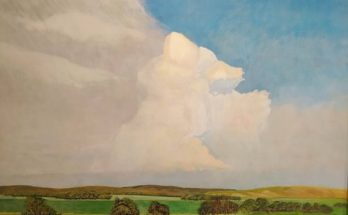By Francisco Peyret
Halloween is currently a costume party where children and adults collect and eat large amounts of candy. But its origins are not so festive; the idea came down from an ancient Celtic festival more than three thousand years old, celebrated in Ireland on October 31, when the harvest season came to an end and the Celtic New Year began. It was originally a pagan holiday that made its way to the United States in Minnesota.
On the other hand, the Day of the Dead in Mexico is a celebration that mingles two cultures: the Spanish and the pre-Hispanic Mexican. Its origin is a fusion between the celebration of Catholic religious rituals brought by the Spanish and the commemoration of the day of the dead of the indigenous people. It is another example of syncretism. Many Mexicans remember with special affection the Days of the Dead of our childhood, when we used to go out at night to ask for a calaverita—a little skull. It was customary then to have small altars at home, put up by our mothers to honor their dead. For the children, it was sensational because we could be in the street until late at night carrying a shoebox on which we drew a skull face with a candle inside. We would wave and ask for coins and feel like millionaires on those nights.
But at the same time, the traditions of Halloween began to invade as well. Children appeared with plastic pumpkins, dressed as ghosts, asking for candy at nearby houses. It seemed nonsense to us. It was an attack on the small business that we had every year. Then by the time we were adolescents, Michael Jackson appeared in his «Thriller» video, and that put Halloween-type costume parties at the top of fashion. Fortunately, those city fashions never penetrated deep into Mexico, and our tradition was not lost. On the contrary, now we feel that the Mexican Day of the Dead is more present than ever in Mexico and worldwide.
Nowadays, it is customary to see parades with people of all nationalities in catrina costumes around the world. This seems to have been helped by the movie «Coco» (2017) and by the James Bond film «Spectre» (2015), both filmed in Mexico. However, there is already controversy about it in Mexico because it turns out that «Catrina» is a character created by José Guadalupe Posada in 1912. The cartoonist ridiculed the bourgeois ladies of the Porfirio presidency, who dressed to the nines with European fashions at the beginning of the 20th century. The catrina has nothing to do with the traditions related to the Day of the Dead, but Diego Rivera later immortalized the character created by Posada in his mural «Dream of a Sunday Afternoon in the Alameda Central.» It may mean that thanks to a new kind of syncretism, Mexicans have imposed the Catrina fashion worldwide. Mexican Day of the Dead is defeating American Halloween in the battle of traditions.
Two Mexican authors speak eloquently about the meaning of death for Mexicans. The writer Juan Rulfo (Pedro Páramo) talks about death as a natural thing and that we Latin Americans have a very different way of thinking about death than Europeans: «They never think about death until the day they are going to die.» Octavio Paz maintains that Mexicans do not eliminate death from their daily life. Death is a word that is not feared and is pronounced frequently and easily. According to the poet, personal appearance for a Mexican revolves around not being seen as he is to hide his true essence with masks or attitudes that act as a disguise.
Below are some popular expressions related to death that Mexicans hear and use from childhood:
«The dead to the well and the living to joy»;
«He was not dead; he was out partying»;
«The cemeteries are full of dead and drunks»;
«The skinny one (euphemism for death) already took him»;
«He has hung up his sneakers»;
«He has already handed over the equipment»;
«He already sucked headlights»;
«He was already worth…»;
«He has already kicked the bucket»;
«He went ahead of us»;
«The bony one took him»;
«I feel like having a very dead one (beer)» ;
«As you see yourself, I saw myself, and as you see me, you will see yourself»;
«He who kills with iron, dies by the iron»;
«First dead…»;
«Over my dead body…»;
«Calaca, tilica and skinny…»;
«Frighten me, cemetery!»;
«Don’t hang that dead man on me»;
«After drowning the child, they cover the well»;
«When the owl sings, the Indian dies»;
«The dead and the unwelcome guest stink after three days»;
«Until death separates them»’
«Crowns go on the dead»;
«The dead to the grave, and the living to mischief»;
«The dead to the drawer and the living to the big party»;
«Fear does not ride a donkey»;
«Dead the dog, rabies is gone»;
«Good love and good death, there is no better luck»;
«In this rattling world of dying no one escapes»;
«What kills is not death, but bad luck»;
«Among flowers, we are welcomed; among flowers, we are bid farewell»;
«Crying is where the dead are»;
(Phrases from the magazine «Mexico Desconocido»).
Do you know any other?




